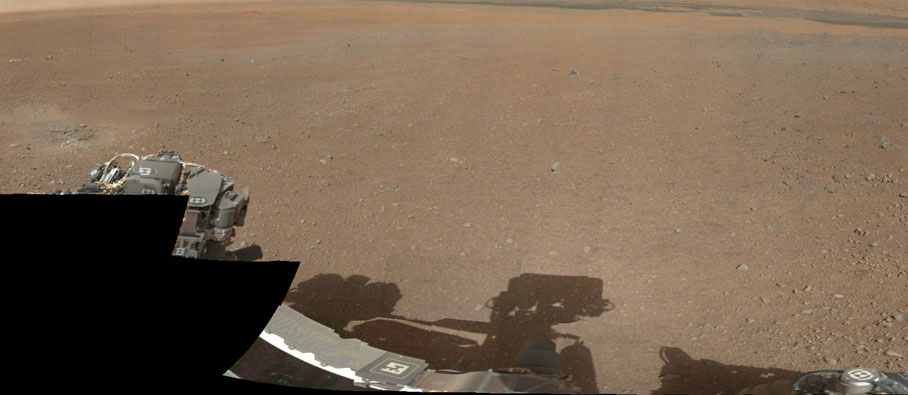Unusual weather detected on Mars
The Curiosity probe of the US Aerospace Agency (NASA) is enjoying the warm, beautiful weather on Mars, though not yet on the red planet. This is completely contrary to the predictions of experts on Earth.
The integrated meteorological station on the Curiosity called Remote Environmental Monitoring Station (REMS) measured the air temperature in the afternoon on Mars as high as 6 degrees Celsius. Scientists said the temperature above Red planet has risen above the freezing level for more than half a day here since REMS station went into operation.

The daytime temperature on Mars is quite depressing even though it is still at the end of the winter. (Photo: NASA)
The results of the Mars weather measurement are beyond the expectations of experts on Earth, as it is still the eastern end of the Gale hole - the location is 4.5 degrees south of Mars's equator and is where the selected Curiosity landed on the red planet on August 5.
Space page quoted Felipe Gómez from the Astronomical Center in Madrid (Spain), saying: 'The warm temperatures measured during the day (on Mars) are a pleasant surprise'.
The main purpose of the Curiosity vessel is to determine whether the Gale pit area has been suitable for microbial life. Most researchers think that Mars is too dry and cold today, not suitable for life as we know it. However, they may have to reconsider some of their conclusions if the temperature on the red planet continues to increase significantly during the coming spring and summer seasons.
According to scientists, although the daytime of Curiosity is relatively comfortable with warm weather, night time is completely opposite. Air temperature dropped significantly after sunset, down to -70 degrees Celsius just before dawn.
The temperature on the red planet fluctuates so much because of the Sun's heating effect on Mars is stronger on Earth. The surface of Mars is much drier and the planet's atmosphere is only 1% thick on Earth's atmosphere.
REMS station measurements also revealed, atmospheric pressure is increasing at the Gale hole. This information is consistent with the conjecture of scientists involved in managing the mission of Curiosity.
In winter, Mars becomes very cold, enough to carbon dioxide at the poles to freeze, forming patches of 'dry ice' covered by season. Because carbon dioxide occupies a large proportion of the red planet's delicate atmosphere, this freezing process creates seasonal variations in pressure.
The REMS station's measurement results show a huge daily change in atmospheric pressure on Mars, from the lowest level of nearly 685 pascal to the highest level of approximately 780 pascal. However, they are still too low compared to atmospheric pressure on Earth. For example, the pressure when the average volume at sea level on our planet is 101,325 pascal, about 140 times higher than the Gale hole.
NASA experts said that the Curiosity on-board meteorological station had suffered minor damage during the Martian landings when the wind sensors on one side of the station were damaged by rock . However, because the wind sensor devices in REMS's other crane still work well, the mission management board does not consider this as a good furniture.
- Australia applies a hot early warning system
- Discover many unusual things on Mars
- Important evidence shows that Mars is more likely to have life
- Unusual weather phenomena in the world
- There was drinking water on Mars
- Unusual weather why?
- Cold prices in the US and Canada continue to be complicated
- Mars weather is extremely harsh
- Unusual weather in Germany, at least 6 people were killed
- Unusual weather phenomenon: Snowfall in mid-summer in New Zealand
- Unusual cold weather in northeastern England
- 'Who comes back from Mars:' Is reality or just fiction?
 Van Allen's belt and evidence that the Apollo 11 mission to the Moon was myth
Van Allen's belt and evidence that the Apollo 11 mission to the Moon was myth The levels of civilization in the universe (Kardashev scale)
The levels of civilization in the universe (Kardashev scale) Today Mars, the sun and the Earth are aligned
Today Mars, the sun and the Earth are aligned The Amazon owner announced a secret plan to build a space base for thousands of people
The Amazon owner announced a secret plan to build a space base for thousands of people